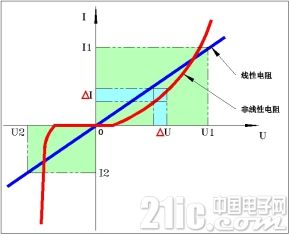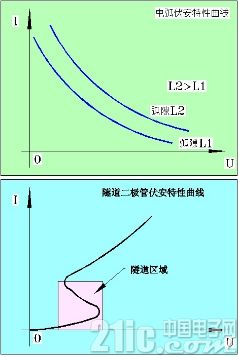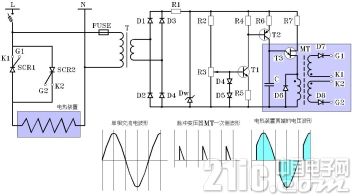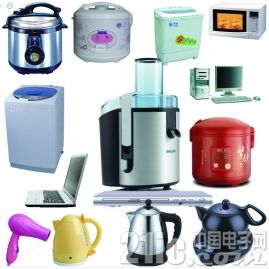Abstract: In our life, from small mobile phones to large cars, any kind of electrical appliances are inseparable from one thing, that is, resistance. Maybe everyone is familiar with it, but what is its use? Why do you have it in all appliances? This article will answer you.
This article refers to the address: http://
"The English name of the resistor is resistance, usually abbreviated as R, which is a basic property of a conductor, related to the size, material, and temperature of the conductor." This is the definition of resistance under the textbook. What is the use of it? We go directly to the topic.
First, the first use of resistance: collecting non-electrical parameters
We know that there is a certain relationship between the resistance value and the temperature. Look at the following:
![]()
Here, there is a functional relationship between the resistance value R and the temperature T. So we can use the resistor to collect the temperature.
There are two kinds of resistors for collecting temperature, one is called the positive temperature coefficient thermistor, and the other is called the negative temperature coefficient thermistor. Both types of thermistors are used in a wide variety of applications.
The resistor can also be used to collect other physical quantities such as varistors and photoresistors.
Second, the second use of resistance: can be used as a component ID
Let's look at the picture below:

The ordinate of this figure is the current I and the abscissa is the voltage U. This figure is also called current-voltage characteristic curve, and more often referred to as volt-ampere characteristic curve.
According to Ohm's law, we have:

Here R is called the dynamic resistance, which is actually the reciprocal of the slope of the curve. When R is greater than zero, it is called positive resistance characteristic, and conversely, when dynamic resistance R is less than zero, it is called negative resistance characteristic.
For the blue curve, we see that it is a straight line passing through the origin, and its dynamic resistance does not change with voltage and current. The components that satisfy this volt-ampere characteristic curve are called linear components; otherwise, For the red curve, we see that it is a curve whose dynamic resistance changes with voltage and current. An element that satisfies this volt-ampere characteristic curve is called a nonlinear element.
Third, the third use of resistance: used to analyze the relationship between voltage and current, in order to understand the corresponding physical meaning.
Let us look at the picture below:

The figure above shows the volt-ampere characteristic curve corresponding to the arc gap arc of the main contact of the switchgear. It is used to analyze the physical characteristics of the arc and the arc-extinguishing method. The figure below shows the volt-ampere characteristic curve of the tunnel diode. We can see the obvious tunneling effect.

The T3 on the right side of the figure is the tunnel diode, and sometimes it is called a single junction transistor. Using the tunneling effect of the tunnel diode, a trigger pulse that triggers the thyristor can be generated.
Fourth, the fourth use of resistance: applied to our lives, applied to a variety of scientific activities.
The application of resistors is extremely wide, and some applications can't even think of it. The first is the heating effect of the resistor. For example, electric blankets use the heating effect of resistors to improve the quality of our sleep, as well as rice cookers, electric woks and electric stoves.

We can also use the illuminating effect of the resistance heating to achieve luminaire lighting, such as incandescent lamps. Of course, incandescent lamps are now rarely used.
We can also change the voltage of the transparent conductive film on the glass surface to change the resistive temperature of the conductive film to achieve discoloration of the glass.
We can also measure the salinity of seawater by measuring the conductivity of seawater. It is also possible to indirectly infer the geological structure of the earth by measuring the change in resistivity of the earth.
Fifth, the fifth use of resistance: convert current into voltage
Careful friends may have already seen it, why is this basic use at the end? Because it matters! It is relevant to this basic use in almost all applications of resistance. When an ordinary resistor is connected to the circuit, we can easily calculate the current from the voltage according to Ohm's law. If a high-stability temperature-compensated resistor is applied, then we can accurately calculate the current value, which is also high in various instruments. The source of precision, such as ZLG Zhiyuan electronic PA8000 certified power analyzer is the German custom-made high-precision resistor, coupled with the mature analog circuit design experience of Zhiyuan Electronics, finally achieving a power accuracy of 0.01%.
In short, in the application and development of resistance, there are still many unknown spaces waiting for everyone to work hard to develop and develop. Let's wait and see together.
P3.5X6 Automotive Connector
P3.5X6 Automotive
ShenZhen Antenk Electronics Co,Ltd , https://www.antenksocket.com
